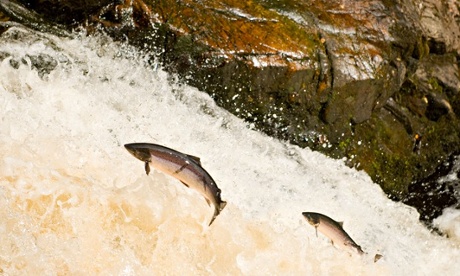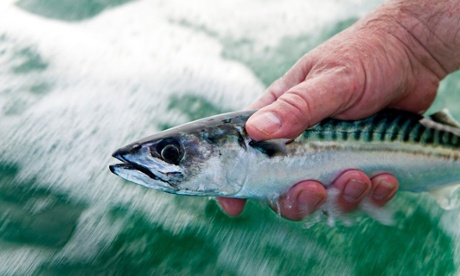Don't buy wild-caught salmon, British shoppers told
Sustainable seafood guide warns over depleting Atlantic salmon stock, but puts mackerel and haddock back on ‘Fish to Eat’ list

British consumers are being urged by a marine charity to avoid buying and eating wild-caught salmon because of concerns about depleted stocks resulting from overfishing.
In the Marine Conservation Society’s (MCS) update of its sustainable seafood guide, wild-caught Atlantic salmon remains on the ‘danger list’ along with some whiting – often suggested as a good alternative to cod and plaice. But the new ratings reveal better news for mackerel, herring and halibut as stocks are improving.
Other tea-time favourites have mixed fortunes. Cod from both the east and west Baltic get a cautionary rating, while North-east Arctic haddock and mackerel from the EU and Norway are all back on the ‘Fish to Eat’ list.
North Sea cod, however, remains a fish to avoid. Given cod’s popularity, the MCS urges shoppers to stick to cod from Marine Stewardship Council-certified fisheries in the north-east Arctic, Iceland or eastern Baltic.
Fish to avoid
In its ongoing assessment of the state of health of the UK’s fisheries and stocks, the MCS noted that in Scotland, lack of measures to prevent overfishing of salmon from rivers where stocks are low, and the absence of internationally recognised conservation limits, have resulted in the species slipping onto the red-rated, ‘Fish to Avoid’ list.
Bernadette Clarke, MCS fisheries officer, said she hoped that recent calls to Scottish ministers to limit salmon exploitation would be productive: “Unlike most other members of the North Atlantic Salmon Conservation Organisation (Nasco), Scotland has not yet set conservation limits for its salmon rivers, and according to Nasco has almost no management regime in place to prevent an increase in coastal netting, neither has it adequate mechanisms to limit catches whether local salmon populations are strong or weak.”

Fish to eat
The MCS gives ratings to each fish by assessing the relative healthiness of each stock and the sustainability of the various fishing methods used.
The Scottish mackerel processing industry welcomed mackerel’s return to the Fish to Eat list. Ian McFadden, chairman of the Scottish Pelagic Processors Association (SPPA), said: “This is great news for the mackerel fishing and processing industries; wider economy; and consumers. The reclassification of mackerel as a fish consumers can eat regularly, without threatening the sustainability of the stock, is testament to the seven North East Atlantic fisheries, which came together to agree a management plan to safeguard the sustainability of the mackerel stock.”
The updated guide includes additional entries for lobster and crab and new entries for cuttlefish and squid. The best sources for lobsters are from fisheries where there are measures in force to protect ‘berried’ or egg-bearing females. Current legislation prohibits the landing of berried crab but not lobster. Lobster from the Southwest, Cornwall, and crab from the western channel and the Celtic Sea are the most sustainable choices.
No comments:
Post a Comment